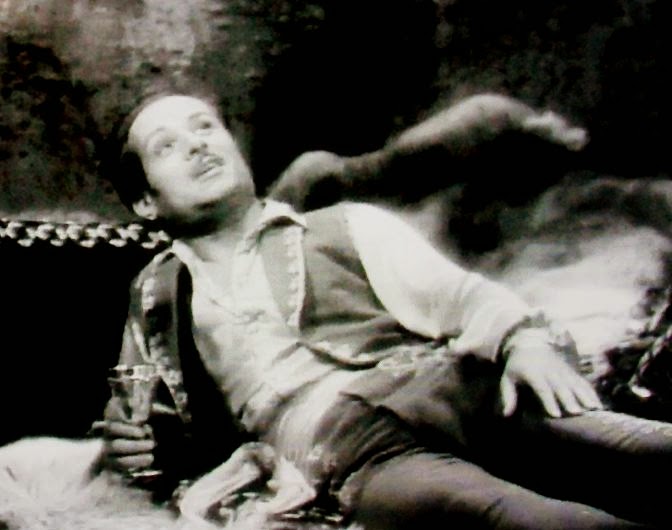 This overlooked gem is a cute pre-Code romantic comedy with some clever writing and good performances, and I hope TCM sees fit to air it more often. The great opening sequence is a tracking shot across city streets to focus in on a brawl in a diner, initiated by Red Branahan (William Gargan) who insists that he started it to save the honor of his live-in gal Aggie (Wynne Gibson). Red is a charming roughneck gambler, but he can rarely scrape up rent money when the landlady (Jane Darwell) comes calling. When Red is arrested for beating up some cops, Aggie is left homeless, so her friend Sibby (Zasu Pitts) lets her stay overnight in an apartment house where she works, in the room of milquetoast Adoniram Schlump (Charles Farrell) while he's out looking for a job—he's from a rich family but he wants to make it on his own even though he has no discernible talents. But Schlump, who is engaged to socialite Evangeline, comes home early to find Aggie sacked out in his bed. He lets her stay and she sets out to make a man of him: she gets rid of his glasses, loosens his tie, ruffles his hair, and makes him take off his record of "Pomp and Circumstance" to listen to hot jazz.
This overlooked gem is a cute pre-Code romantic comedy with some clever writing and good performances, and I hope TCM sees fit to air it more often. The great opening sequence is a tracking shot across city streets to focus in on a brawl in a diner, initiated by Red Branahan (William Gargan) who insists that he started it to save the honor of his live-in gal Aggie (Wynne Gibson). Red is a charming roughneck gambler, but he can rarely scrape up rent money when the landlady (Jane Darwell) comes calling. When Red is arrested for beating up some cops, Aggie is left homeless, so her friend Sibby (Zasu Pitts) lets her stay overnight in an apartment house where she works, in the room of milquetoast Adoniram Schlump (Charles Farrell) while he's out looking for a job—he's from a rich family but he wants to make it on his own even though he has no discernible talents. But Schlump, who is engaged to socialite Evangeline, comes home early to find Aggie sacked out in his bed. He lets her stay and she sets out to make a man of him: she gets rid of his glasses, loosens his tie, ruffles his hair, and makes him take off his record of "Pomp and Circumstance" to listen to hot jazz. Aggie takes him to apply for a job as construction gang supervisor and has him use Red's name, since Red has a city-wide rep as a tough guy. He gets the job and when he accidentally knocks out a troublemaker, the men look up to him, and soon Aggie finds herself falling for him. But when Red gets out of jail, Aggie has to choose; when she complains to Sibby about her situation, Sibby says, "A woman can't be in love with two men—she may think so, but one of 'em is just indigestion." (Another gem of wisdom from Sibby: "Men are like trees—the more you tap 'em, the more sap comes out.") Things get even tougher for Aggie when she realizes that she actually has begun to miss the kinder, gentler, well-mannered Schlump, especially missing that he used to call her Agnes instead of Aggie.
Aggie takes him to apply for a job as construction gang supervisor and has him use Red's name, since Red has a city-wide rep as a tough guy. He gets the job and when he accidentally knocks out a troublemaker, the men look up to him, and soon Aggie finds herself falling for him. But when Red gets out of jail, Aggie has to choose; when she complains to Sibby about her situation, Sibby says, "A woman can't be in love with two men—she may think so, but one of 'em is just indigestion." (Another gem of wisdom from Sibby: "Men are like trees—the more you tap 'em, the more sap comes out.") Things get even tougher for Aggie when she realizes that she actually has begun to miss the kinder, gentler, well-mannered Schlump, especially missing that he used to call her Agnes instead of Aggie.This sprightly romantic comedy kept me interested all the way through. Some may find the ending predictable, but right up until the last few minutes, I had the feeling it could go one of three ways: she winds up with a slightly toughed-up Schlump, she winds up with a slightly softened Red, or she leaves them both behind. I'm not that familiar with Gibson's work but she's very good in the Joan Blondell-type title role; Farrell's somewhat squeaky voice is put to good use, though I find his earlier look with glasses to be more attractive (pictured at left) than his macho makeover; Gargan (pictured above right with Gibson), a favorite character actor of mine, shines in the first fifteen minutes, though his character is more or less out of commission for the rest of the film. Zasu Pitts is fun as always. Other amusing lines: Gibson telling Farrell to change his vocabulary by using words "with hair on 'em"; when Gibson worries about how Farrell's fiancée would react if she went after him, Pitts says, "I'd say, Raspberries, Evangeline!" Very fun. [TCM]











